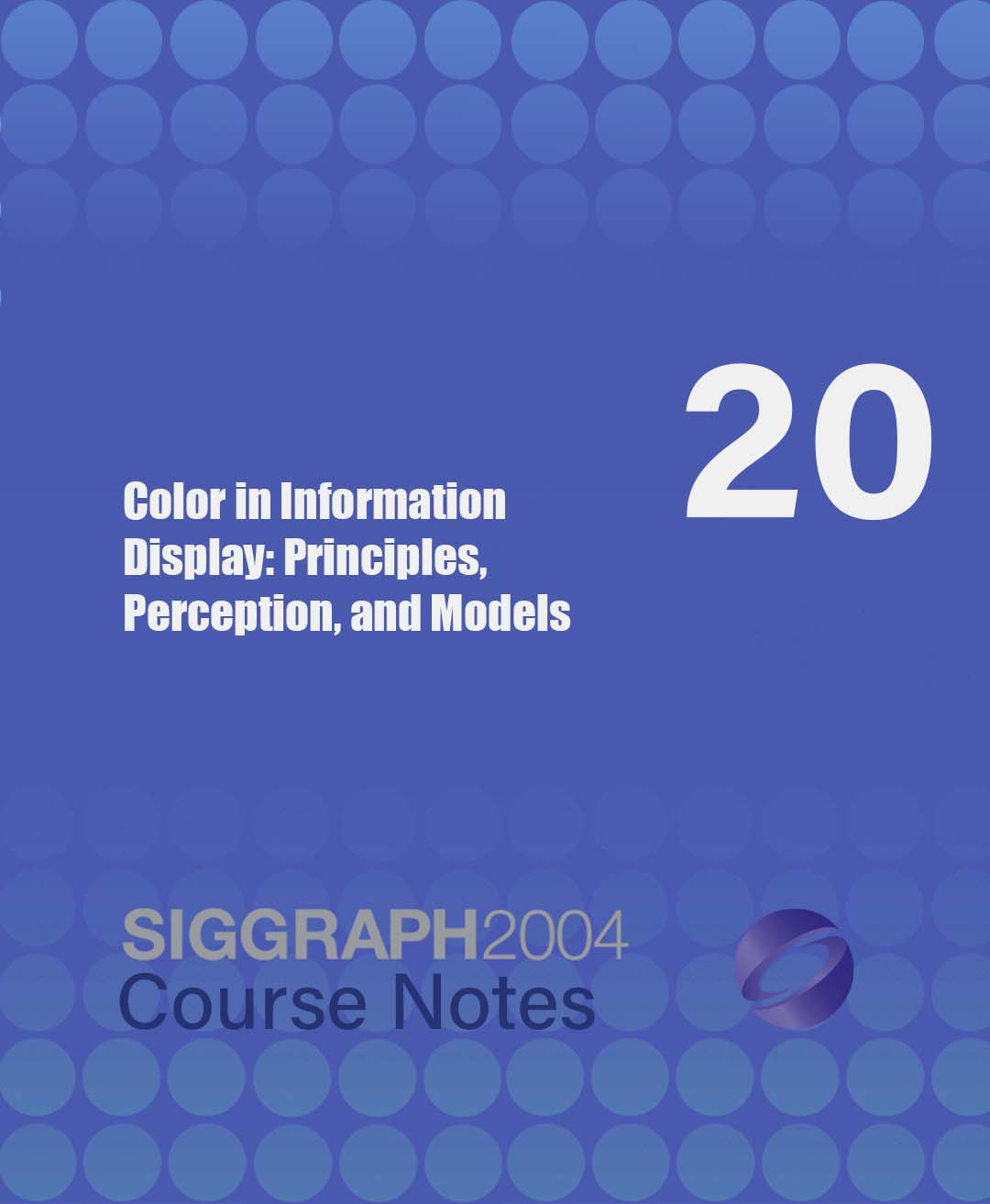“Color in Information Display: Principles, Perception, and Models” by Stone
Conference:
Type(s):
Entry Number: 20
Title:
- Color in Information Display: Principles, Perception, and Models
Organizer(s):
Presenter(s)/Author(s):
Abstract:
Prerequisites
This course should be accessible to all SIGGRAPH 2004 attendees who understand basic scientific and mathematical presentation (simple graphs, diagrams, and algebraic equations).
Intended Audience
Primarily engineers and researchers involved in development of systems and algorithms for information display (visualization, illustration, and the visual component of user-interface design). It may also be of interest to digital artists and designers seeking more information about the technical and perceptual factors that affect digital color design.
Description
Color is a key component of information display that is easy to use badly. As a result, Edward Tufte’s key principle for color design is “do no harm.” While inspired color design is an art, the principles that underlie good color design have their roots in human perception and a deep understanding of the color properties of different media. Over the last decade, there has been significant progress in providing computational models for color perception. Similarly, substantial research and engineering work has made it easier to predict and control color in digital media. Taken together, these advances provide a foundation that should enable algorithmic application of color that is robust and effective, if still not “inspired.”
This tutorial surveys the topics that support this goal and provides pointers for further in-depth exploration. Topics include: principles for the use of color in information display; principles of color design and color harmony; ways to numerically define and transform color, including visual, perceptual, aesthetic, and media-specific “color spaces;” color management systems and their application; and color-appearance fundamentals. The tutorial concludes with an overview of some relevant research, including: automatic generation of color scales, algorithms for mapping names to colors, models for color blindness, and computational models for color appearance.





